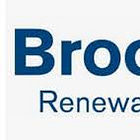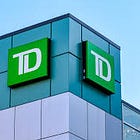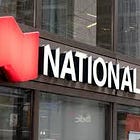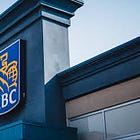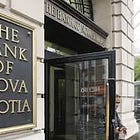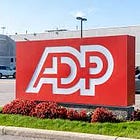Coca-Cola - Definition of a Staple - FY24
As companies start to reveal their earnings for the fiscal year 2024, here are the results for a stock in my portfolio along with a business valuation.
Welcome to my summary of Coca-Cola’s ($KO) earnings report for fiscal 2024. For additional context, please refer to my earlier post detailing my valuation methodology.
Year-End Results
Coca-Cola (KO) continues to leverage its global scale and local-market expertise, capturing demand in emerging markets and expanding its portfolio in North America.
Revenues increased by 3%.
Earnings per share (EPS) remained largely unchanged, while the adjusted EPS increased by 7%.
Dividends per share (DPS) increased by 4%.
The payout ratio of 78% is within the normal range for the company.
Operating cash flow (OCF) totaled $12.8 billion, and free cash flow1 (FCF) amounted to $10.7 billion. This is after adjusting for the one-time IRS tax litigation expense of $6 billion.
The net profit margin held strong at 22.6%.
The long-term debt-to-equity ratio has remained elevated at 1.70 with a FCF to Debt of 0.25. These levels are normal for this industry.
The annualized average growth rate of the share price was +5% over five years, +6% over three years, and +7% over the past year.
The number of outstanding shares decreased as a result of buybacks.
Investor Call Highlights
Global Powerhouse. A global franchise model significantly enhances its potential for long-term growth. This extensive global diversity supports its efforts to increase earnings.
Asia Pacific: Volume growth in China, Japan, South Korea, and India. Successful marketing campaigns and integrated execution.
EMEA: Mixed performance with volume declines in Europe but revenue and profit growth. Strong innovation and marketing efforts.
Africa: Volume decline due to macroeconomic pressures, but investments in affordability and cold drink equipment.
Latin America: Volume, revenue, and profit growth despite macroeconomic pressures. Focus on single-serve offerings and digital customer platforms.
North America: Robust top-line and profit growth. Strong performance in sparkling flavors and consumer engagement.
Headwinds. The company faced nearly double-digit currency headwinds, impacting earnings. The impact of bottler refranchising was another challenge, affecting the company's comparable earnings. Despite this, KO achieved 7% comparable earnings per share growth.
One notable aspect of their franchise model is KO's strategy to localize business operations within each country. For instance, if a product is consumed in an Asian country, they prioritize integrating its production locally.
Dividend Aristocrat. If you're seeking a reliable dividend performer with a track record of growth, KO is an excellent choice. The company's strong brand and shareholder-friendly policies make it an attractive option for income investors, especially as its exponential growth phase is beyond them.
My Own Valuation
When a company demonstrates strong organic revenue growth, it's one of the best indicators that they are evolving into a great business or cementing their status as one of the greatest companies. For KO, it is undoubtedly the latter.
KO is known for its reliable dividend, making it an attractive option for income-focused investors. Until it loses its global dominance, it will forever be a staple! If you're willing to take on more risk for growth, their competitor, Pepsi (PEP), is your ideal choice.
Despite facing headwinds, this company remains highly shareholder-friendly, consistently returning excess cash flows through buybacks or dividend increases. Whenever it falls out of favor, take a close look and consider it for your portfolio—nothing thrilling, but reliably steadfast.
Net Income Growth: The spreadsheet presents a growth estimate that reflects the company's anticipated rise in net income for the upcoming five years, based on the average of projections from multiple analysts. The estimate is additionally adjusted down to reflect a more conservative approach.
Free Cash Flow to Equity (FCFE): This is calculated for several years, showing the amount of cash that could be distributed to shareholders after all expenses, reinvestment, and debt repayments.
Discounted Cash Flow (DCF) Valuation: The spreadsheet includes a DCF valuation section, which is a method used to estimate the value of an investment based on its expected future cash flows. It provides two valuation methods:
Perpetuity Growth: Calculated using a long-term growth rate and discounting future cash flows.
Exit Multiple: Based on an exit price-to-earnings (P/E) multiple.
Current Share Price vs. DCF Value: A table compares the current share price of ATD with the estimated share price based on DCF valuation, suggesting whether the stock is undervalued or overvalued according to the model.
Disclaimer: The information provided in this valuation analysis is for educational and informational purposes only. It does not constitute financial advice or a recommendation to buy, sell, or hold any specific stocks or securities. The valuation model presented here relies on certain assumptions, including projected future cash flows and discount rates.
Other FY24 Reviews
McDonald's - Struggling Growth - FY24
Welcome to my summary of McDonald’s ($MCD) earnings report for fiscal 2024. For additional context, please refer to my earlier post detailing my valuation methodology.
Consider joining DiviStock Chronicles’ Referral Program for more neat rewards!Please refer to the details of the referral program.












